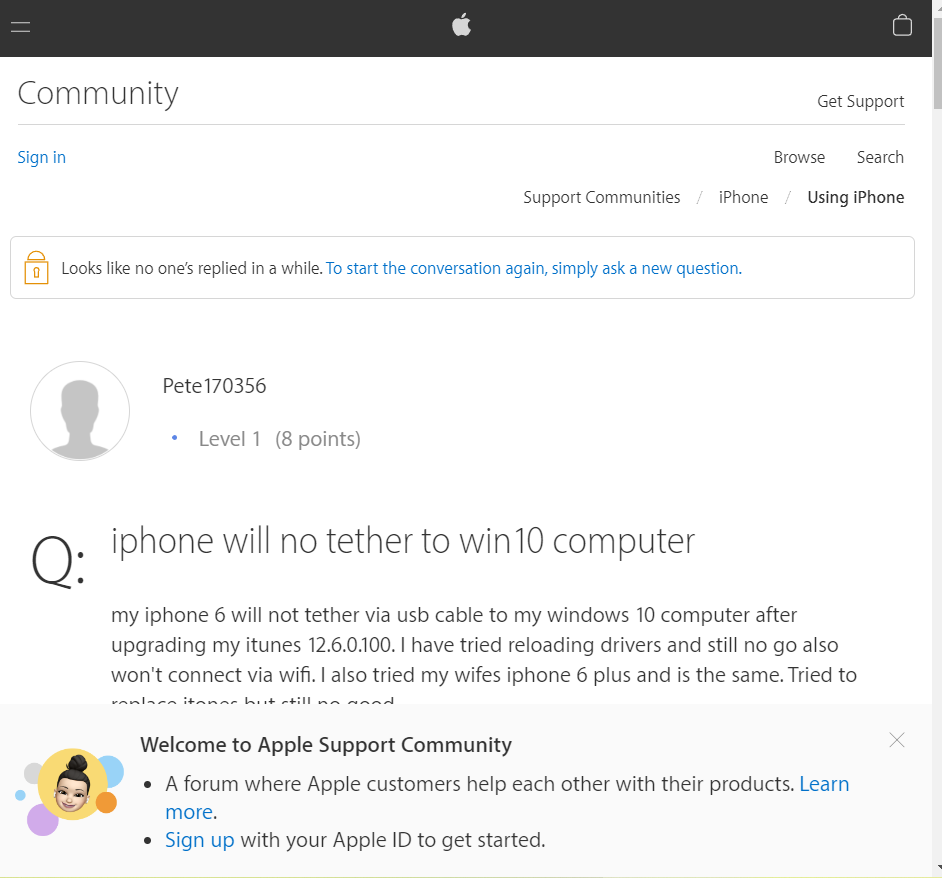
Understanding the Value and ROI of Online Communities
Creating a vibrant online community where customers can discuss your products is a great way to build a buzz about your brand, nurture loyalty, and even boost sales. But it’s hard to know if the time and effort are worth it without having an effective way to measure the value and ROI of online communities.
The problem is that measuring the ROI of online communities is not as straightforward as it seems. It’s not as simple as starting an online community and then measuring how your sales improve.
That’s because the value of an online community goes far beyond improving immediate sales and lasts indefinitely. In fact, direct sales usually play an insignificant part in the real value of online communities. There are many more effective ways to sell products!
When it comes down to it, online communities offer additional value that is hard to quantify. They can help increase awareness and interest in your brand and move prospects down the marketing funnel.
They provide even less tangible benefits, such as improving the experience for loyal customers by allowing them to share tips and ideas about your products. They can also do the following:
- Promote goodwill
- Attract a fan base for your brand
- Nurture long-term loyalty
That said, using the standard definition of ROI will significantly undervalue the contribution an online community can make to the success of your business. That’s because you calculate ROI by dividing an investment’s net profit by its initial cost. ROI, on its own, doesn’t take into account the longer-term costs and benefits of your investment.
Instead, you’ll need to embrace a broader definition of ROI if you want to know the real value of hosting a community. So, read on to learn what you need to know to understand the actual value and ROI of online communities.
The Challenge of Measuring the Value and ROI of Online Communities
To start with, working out the ROI of online communities won’t be as straightforward as it would be for an advertising campaign. With advertising, you can collect and analyze data to measure how much your campaign has increased conversions and revenue from sales. You also know how much you spent on the campaign, so calculating your ROI is pretty straightforward.
Likewise, although there are longer-term benefits to a marketing campaign, you can get an accurate idea of how many of your visitors clicked on a CTA or made a purchase.
With online communities, it’s more challenging to determine the cause and effect between your investments and results.
While marketing or advertising campaigns have a definite beginning and end, a community can last for years! The impact on brand awareness or sales rates may be indirect and take longer to show results. If your sales improve, how do you know whether to give credit to your successful online community or another cause, such as a change in the market or the introduction of a new product?
Measuring how many people buy your product after engaging in a discussion on your forum or through social media videos would also be very tricky. You can’t be sure what motivated someone to buy the product, even if you know they recently visited a page or saw it in a video.
Were they researching your product when they stumbled on the thread or post? Had they already decided to purchase your product but were interested in discovering more?
Why It’s Important to Understand the Value of Online Communities
Because of the challenges of measuring the value and ROI of online communities, some believe it’s pointless and unnecessary. After all, you can see how different types of online communities provide value to the company in their own right. Is there any reason to attempt to quantify it?
Absolutely!
Creating a community isn’t free. It needs to be…
- Built
- Managed
- Supported
- Monitored
So, it’s essential to know the value of the online community to help you decide how to allocate resources. Not only that, but you also wouldn’t want to waste time and energy on something that doesn’t provide any benefit.
Further, knowing the value of your online community offers valuable insights in its own right. It can help you make strategic and tactical decisions.
3 Benefits of Online Communities

Online communities provide more value than just sales, including more influence and engagement with prospects and customers.
Let’s look at 3 specific benefits you should be aware of…
- They Raise Awareness of and Generate Interest in Your Brand
When people are motivated to spend time discussing your offerings and comparing notes on the latest developments, it’s bound to inspire interest in your brand. Enthusiasm is infectious, and others will be influenced by the buzz about new and updated products and services. You could say your community is doing some of your marketing for you.
Online communities help expand your reach by growing your social media presence. Plus, a vibrant community will tend to rank higher in SERPs (Search Engine Results Pages), improving a company’s online visibility and reach. That’s because search engines rank informational web pages higher when they have many visitors, provide useful information, and generate feedback.
Communities raise brand awareness, help you acquire more customers, and lower marketing costs.
#GenerationGood Online Community Drives Brand Awareness

Seventh Generation’s Instagram community, #GenerationGood, illustrates just how an online community can raise brand awareness and attract converts.
#GenerationGood provides a space where parents can engage with each other by sharing photographs, reels, and advice about parenting and healthy living. This is especially valuable for a company whose brand appeals to like-minded consumers wanting household products that are safe for the family and the planet. Their shared interests naturally create a community that wants to support and advocate for safer and healthier products.
The community attracted members who wanted to join a group that reflected their values. But brand advocates within the community also helped to drive brand awareness. Almost two-thirds of its members hadn’t used the brand before joining the community, and many became loyal customers.
AT&T Uses Video and Storytelling to Raise Awareness Among Millennials and Gen Zs

In another example, in an award-winning online community campaign, AT&T raised awareness among millennials and Gen-Zs by creating an 8-week real-time reality show that played out on 9 social media channels.
The @SummerBreak show lasted several seasons and ran alongside an online community where fans could chat, meet friends, and keep up with the latest story developments.
@SummerBreak created content to appeal to a generation of social media users who shared the universal love of storytelling.
The aim was to present a unified brand message in a way that felt more like a friendship. To that end, the cast deliberately adopted the behavior and mannerisms of their target audience. The storylines took inspiration from the cast’s own experiences of constantly using social media to connect with friends and family. They also made it an immersive experience by letting the series unfold at the pace of the summer vacation. Twitter allowed the cast and audience to engage in real-time conversations.
This approach created a following of hundreds of thousands of fans across 9 social media channels. The show was phenomenally successful, with 143 million views and 29 million engagements, building a community of 893K on popular social media platforms.
- They Help Increase Customer Lifetime Value
When people feel like part of a community connected with your brand, they tend to have a more vested interest in your success and be more loyal. They are more likely to spend money with you rather than with your competitors. Plus, participating in your community will keep them engaged as customers for longer.
Communities increase customer lifetime value—or how much they will spend with you over their lifetime.
Nike’s Online Community Builds Customer Value


When it comes to adding lifetime value, there‘s no better example than Nike’s online community, which runs through its membership site and shopping and social media apps.
The online community is easy to join. Just download the Nike: Shop, Shoes & Apparel App, and sign up to become a member with access to a worldwide community with a love of sport and fitness.
In addition to using the app to shop for products, membership comes with benefits that nurture brand loyalty, like member promos, free shipping, access to exclusive clothing styles, and training support.
Nike also offers apps designed to motivate and help athletes and fitness enthusiasts improve their performance. The Nike Run Club App lets you connect with other runners to chat and compare notes. It gives members access to coaching, tracking, goal setting, and personal and competitive challenges.
Similarly, the Nike Training Club App provides social and performance tracking features and workouts, coaching, and nutrition advice.
Nike has gone beyond selling products for customers to play sports. Through its online community, the brand has become an active participant in the lives of its customers to promote a healthy lifestyle. Not only that, but through user-generated content, the online community adds customer value. Fans can learn and share ideas with like-minded members. Through their online activity, fans support each other and, at the same time, become brand ambassadors for Nike.
- They Provide Support and Enhance the Customer Experience
Online communities are an essential part of social media marketing—and knowing how to manage them is a crucial social media skill. Forums and social media interactions can serve as mutual customer support. Participants can ask their peers questions, including tips and suggestions on why they should buy a product or how to solve a problem with a product they recently bought. Accurate answers to popular questions will improve SERPS. It will also have the added benefit of freeing up your customer service team to focus on less frequent, more specific queries.
Not only can social media communities serve as mutual customer support, but you can also use them to support customers directly. That can be achieved through social media comments and messages sent to your brand. This direct access to your brand versus through emails makes your community feel much more connected to you.
Communities help lower the cost of doing business and provide the social benefit of being part of a community.
Apple’s Support Community Taps Customers’ Expertise

The Apple Support Community is a prime example of using an online community to provide self-help customer support, along with a vibrant forum for brand enthusiasts.
It’s no secret that Apple’s customers are loyal to the iconic brand and need little persuasion to buy their products repeatedly. Apple’s lifestyle identity, continual innovation, and attention to detail are part of its success. But they have also harnessed pier support through online communities to promote customer satisfaction and retention.
Answers posted on their Apple Support Community often pop up whenever you search for solutions to problems with your iPhone or other Apple device. Users can search discussions and find answers to questions about the products from millions of customers.
In a nod to self-empowerment, the company says it recognizes customers’ “positive attitude, expertise, and curiosity” to explore new solutions. In addition, posts often point to thousands of Apple Support Pages with self-help solutions that avoid having to call customer service reps.
The community and support pages work together to resolve customer issues without the expense of handling these problems individually. The support community offers other benefits too. It is where Apple fans can hang out, swap ideas, and share knowledge about their favorite products.
Discussions also give Apple a window into what knowledgeable users think about their products and glitches that can be resolved with future models and software updates. The Apple Support Community helps to boost customer satisfaction, nurture brand loyalty, and foster brand advocacy to earn new converts.
How to Measure the True Value and ROI of Online Communities
While it’s not easy to quantify the full value of your community to your business, deciding on the right data and how to collect it is key. That’s because having the right data will offer a complete picture that can help you achieve the best marketing results with limited resources.
Use Marketing Analytics
Marketing metrics can provide a starting point to evaluate the return online communities provide.
The following data sets can help you measure the ROI of online communities, as they would for blogs or social media. These can help you understand how the community grows its reach, attracts leads, and moves prospects down the funnel toward conversions. They will also help you better understand the level of engagement and loyalty of community members.
- Unique visitors
- Number of members and return visits
- Traffic generated through search engines
- Interactions such as likes, comments, and shares (engagement!)
- Social media account engagement rate
- Social media direct message response rate
- Time spent and clicks to other threads on social media communities and traditional forums
- Click-throughs to other parts of your site that result in conversions through CTAs
- Number of page views
- Direct sales
- Number of quality links that increase traffic to your community and website
To get a fuller picture of the ROI of online communities, it’s also important to try to take into account other sources of revenue, such as the following:
- Revenue from advertising
- Revenue from 3rd party sellers and members on your website
- Membership fees your online community generates
Count the Less Visible Value of Online Communities
There are other longer-term and less direct benefits that help determine the true value of online communities. The value of well-managed and popular communities can grow over time. As the membership of a vibrant social media community or traditional forum grows, so does its influence. While harder to quantify, it is vital to understand they are part of the overall picture when assessing how much your community will impact your business.
Here are a few such benefits to consider:
- Social Benefit and Loyalty: Consider the benefits of allowing your customers to be part of a group and feel a common interest in your product. This may help nurture loyalty to your brand and unite your customers. In addition, having a community may help protect you from others that try to poach or mislead your customers and prospects.
- Improve Services: Monitoring social media communities and forums provide an opportunity to get valuable feedback from members who know and like your brand. Both positive and negative feedback when introducing changes or new products can be invaluable.
- Social Mission: Social communities provide other benefits to nonprofits, such as churches or organizations with a social mission. Online communities provide an opportunity to…
- Spread your message
- Allow members to develop and exchange beliefs and ideas
- Give members the chance to seek advice and support from their peers
- Encourage members to volunteer
- Other Benefits: You can measure other benefits that may impact your profits. These include cost savings from helping to lower marketing costs and mutual customer support between community members.
Calculate the Cost of Your Online Community
No matter how you calculate the value and ROI of online communities, you also need to evaluate the costs of running your social media community or forum to determine whether it is a sensible investment. This includes the cost of servicing, managing, and monitoring your online community—even community platform fees if you go beyond social. It may also include things like liability insurance to protect your company from lawsuits.
Also, consider the opportunity cost of operating an online community compared to investing in other forms of marketing that may be equally or more effective.
But it works both ways. You need to understand what you will lose if you don’t create an online community. You may miss out on sales, customer loyalty, and higher customer lifetime value. Your costs of marketing and customer service will be lower when the community could be doing part of the heavy lifting for you.
Takeaway
The actual value and ROI of online communities include many benefits that are difficult to quantify. These benefits go far beyond the metrics used to determine the ROI of a traditional marketing campaign.
The real value of online communities includes more fuzzy things like the benefits of being part of a like-minded community. Loyalty is built over time, and revenue from direct sales on social media communities and traditional forums is just a fraction of their return on investment.
The complexity of calculating the value and ROI of online communities doesn’t mean you shouldn’t try to understand what they are. In fact, like any marketing tool, it is crucial to know their impact on your business to make strategic decisions and allocate resources effectively.
If you want to get the most from your online community, we can help you navigate the ever-changing world of social media. Start by requesting a free audit today!

